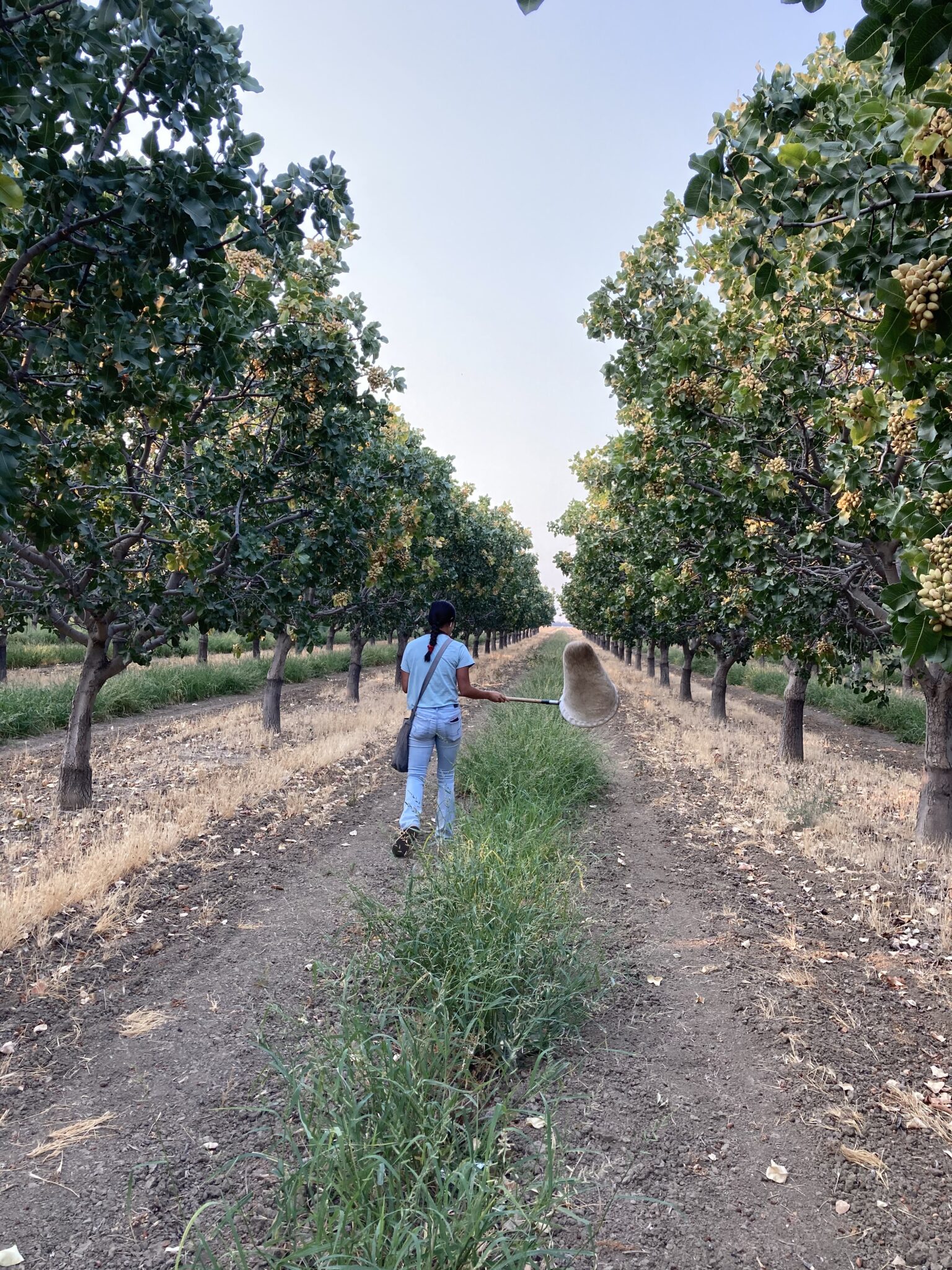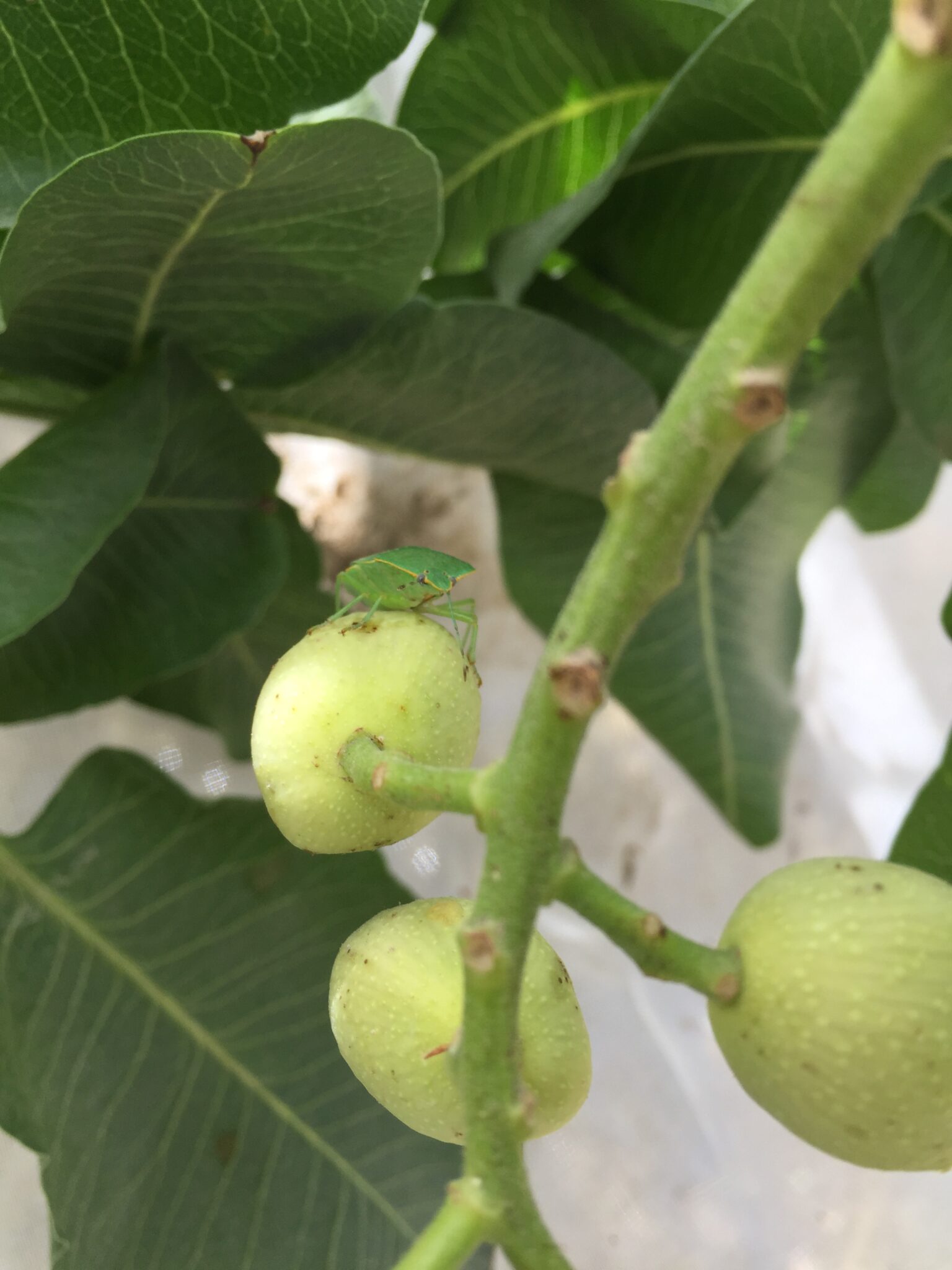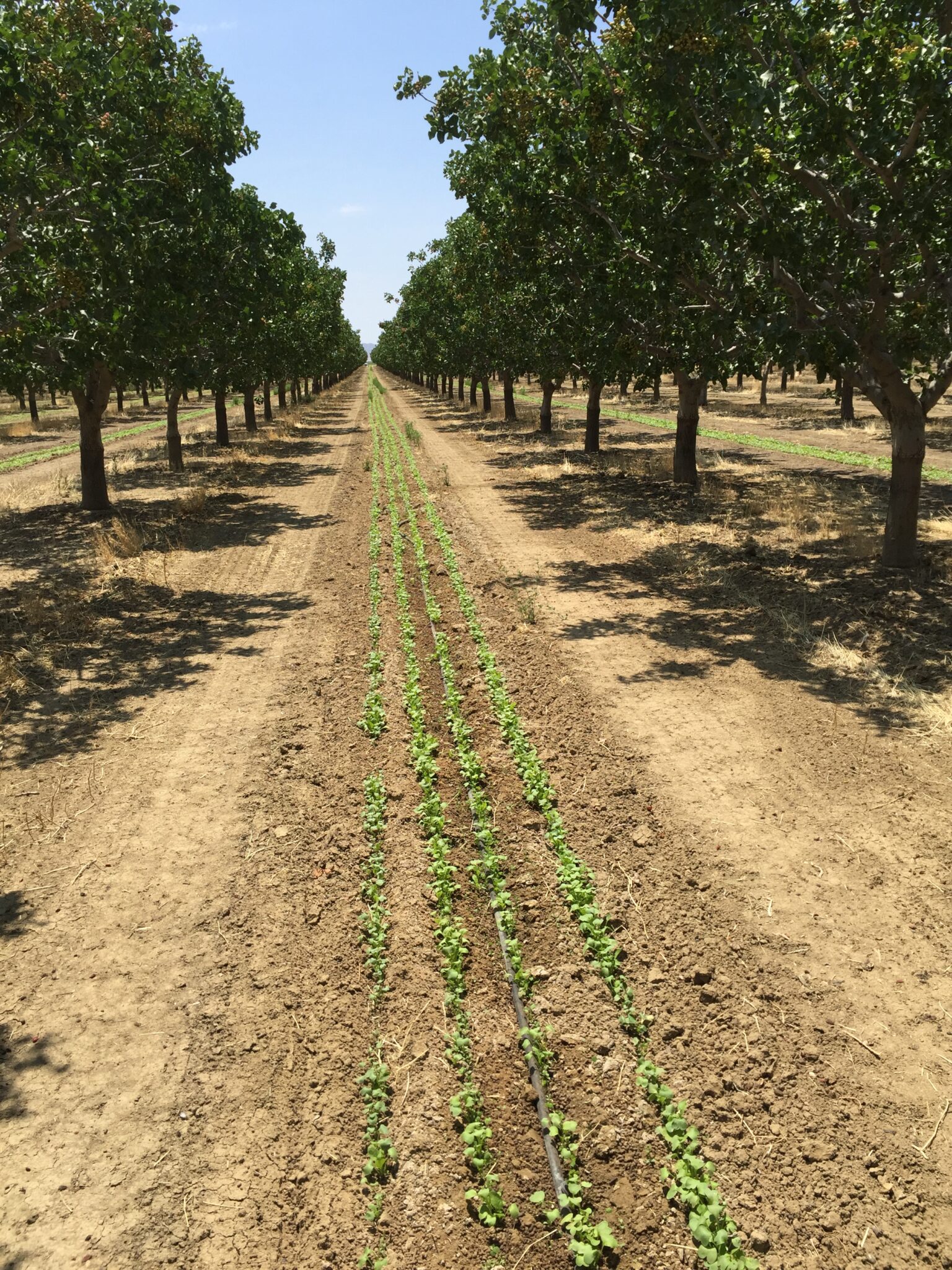
Planting a secondary crop to entice insect pests with a more delectable meal than the primary crop offers is a unique integrated pest management strategy currently being explored in pistachio orchards.
Research funded by the California Pistachio Research Board and the California Department of Food and Agriculture is determining how to best use a spring/summer cover crop as a ‘trap crop’ to attract stink bugs away from pistachio clusters early in the season when nuts are more vulnerable to attack by these insects.
While simple in theory, timing the establishment of trap crops to coincide with pistachio nut development and stink bug phenology requires a delicate balance. There is also an economic consideration with planting and maintaining a trap crop relative to how much of a reduction in crop damage can be realized.
“There are a lot of dimensions to think about with trap crops,” said Houston Wilson, one of the researchers involved in the study.
Wilson, who is a UCCE Orchard IPM Specialist (Dept. of Entomology, UC Riverside) and now also Director of the newly created UC Organic Agriculture Institute, said the research team is taking incremental steps toward developing a viable program that would be feasible in California tree nut crops. The goal of the study is to determine the best choices in trap crops, timing of planting and seeding density and management of the crop. Wilson said the research team would continue to refine use of the current summer trap crop species and screen additional trap crop species for stink bug attraction.
Ideally, he said, this work will lead to the development of an improved IPM strategy that will decrease plant bug populations in the tree canopy when pistachios are most vulnerable to their feeding.
Unique Approach to IPM
Small and large plant bugs can be abundant in pistachio orchards early in the growing season and can cause significant damage to the outer shell as well as cause fruit drop. The most common small bug species include Calocoris sp., Phytocoris sp. and Lygus sp. The large bugs include redshouldered stink bug, Uhler’s stink bug, Say’s stink bug, flat green stink bug and leaffooted plant bug. These large and small bugs cause similar damage during the first half of the season, but from shell hardening until harvest, the large bugs can continue to puncture kernels though the shell, causing necrosis and stigmatomycosis.
Using a trap crop in a pistachio orchard is a unique approach to integrated pest management, Wilson said. While a trap crop could also provide soil benefits or support natural enemies of crop pests, the species planted in this study have a specific purpose: attracting a targeted group of small and large plant bugs to prevent crop damage.
Once the trap crop has attracted the target pest, different approaches can be taken to manage these insects on the trap crop itself, including mowing or vacuuming the trap crop.
“You have to be smart about this—those bugs are really mobile, and once they are attracted to a trap crop, there is the possibility that they will move into the tree canopies if left unchecked or if the trap crop no longer provides a feeding opportunity,” Wilson said. “One possibility is to track pest populations on the trap crop and then mow or vacuum the trap crop when they are in a less mobile life stage, such as the nymphs.”

Current Research Trials
One example of trap crops can be seen in strawberry production, Wilson said, where an alfalfa trap crop has been used to attract lygus bugs away from strawberries. The alfalfa is planted every tenth bed or so, and when lygus populations have built up on it, growers use a tractor-mounted vacuum to remove them from the alfalfa.
In another example, the USDA’s Sustainable Agriculture Research and Education (SARE) program reported use of black-eyed peas as a trap crop in pecan orchards to prevent stink bug feeding damage. In that study, growers determined that the cost of establishing and maintaining the trap crop was offset by reduced kernel damage by stink bugs.
This current trap crop study in pistachios, Wilson explained, began in 2017 in an organically managed orchard on the west side of the San Joaquin Valley. The grower was flaming for weed control in the tree rows and had pulled the drip lines out into the row middles to avoid damaging them. Realizing the trees were being sufficiently irrigated with the lines left in the middles, Wilson said the grower decided to use that opportunity to experiment with a summer trap crop.
Wilson said the first trials in 2018-2019 tested a blend of three different trap crop species to determine their ability to attract small and large bugs away from the crop canopy. Since stink bugs are seed feeders, he added, they included plants that would meet that need. They also had to determine optimal mowing times and deal with the possibility that populations of the insect pests could increase beyond the trap crop and move into the pistachio crop.
Results from this first trial were mixed, but Wilson said trap crops in some instances did seem to draw insects away from the canopy, and in one year there was lower overall crop defect in the trap crop plots. Beneficial insect populations increased on some trap crops as well, although impacts on biological control were unclear.
The most recent trap crop trial in 2020 evaluated 10 different candidate trap crop species, said Judith Stahl, a post-doctoral researcher at the Kearney Ag Center working with Kent Daane (Dept. of Environmental Science Policy and Management, UC Berkeley.) The candidate trap crop species were chosen based on their performance in attracting large and small bugs in other crop types. The test plants included alfalfa, mustard, vetch, sweet clover, cowpea, garbanzo bean, oats, wheat, buckwheat and sunflower. The goal is to identify mixtures of plants that are attractive to key insect pests throughout the season.
In 2019, large bug populations occurred in similar numbers over the season in both trap crops and control plots, but peak egg laying was less pronounced in the control plots. In addition, parasitism of stink bug egg masses was higher on trees in the plots with the trap crops, indicating they may provide some benefit to biological control as well. There was less plant bug damage to the pistachio crop in nuts collected from trees in the trap crop plots (3.38% damage) relative to control plots (6.05% damage).
The 2019 study confirmed that trap crops can influence small and large bug densities as well as beneficial insect populations. Even though the trap crop did attract large bugs, nut damage was lower than in control plots with just resident weedy vegetation.
Stahl said that going forward, the trap crop study will continue to refine the use of current trap crops and screen additional candidate trap crop species for large bug attraction. Ultimately, the goal is to develop an improved IPM strategy that will decrease plant bug populations in the canopy of pistachio trees when nuts are most vulnerable to attack.











